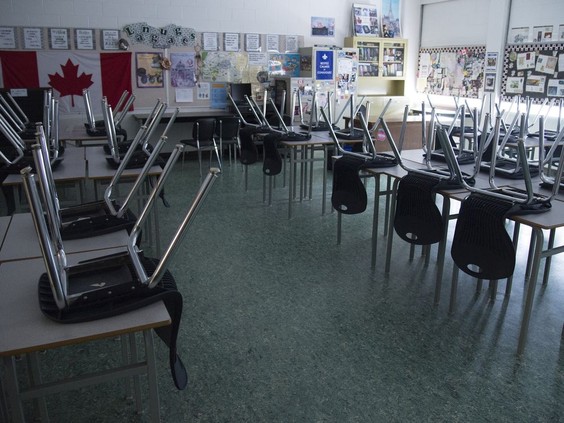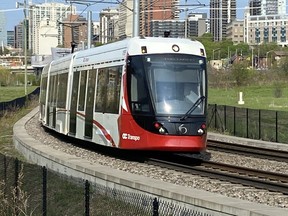Education
Parents Face Uncertainty as Alberta Teachers’ Contract Talks Continue

As the summer vacation draws to a close, Alberta parents are grappling with uncertainty regarding the upcoming school year. With classes scheduled to resume in September 2023, questions loom about whether students will return to school as planned and what educational disruptions might occur as contract negotiations between the Alberta Teachers’ Association (ATA) and the provincial government continue.
In May, teachers rejected a mediated settlement that the ATA recommended accepting. This decision led to a strike vote that passed in early June, placing public school teachers in a precarious position. They now have a 120-day window to provide a 72-hour strike notice, which has left parents anxious about what to expect as the new school year approaches.
Impact of Potential Strike on Students and Parents
Parents are particularly concerned about their children’s educational stability, especially following significant learning loss during the COVID-19 shutdowns from 2020 to 2022. Many students are still feeling the effects of those disruptions. If teachers do choose to strike, there is no assurance that the action will be brief. For instance, during a previous strike in February 2002, Alberta students missed nearly three weeks of instruction. In British Columbia, a teachers’ strike in 2014 extended for more than five months, preventing students from returning to classes for the first two weeks of the 2014-15 academic year.
Despite these concerns, there is a glimmer of hope as negotiations are ongoing this week. However, the timeframe for reaching an agreement is tight. If a deal is not reached, parents are considering alternative educational options. Recent trends indicate a growing interest in diverse educational pathways. In the 2023-24 academic year, home education saw a 16 percent increase, while independent school enrollment rose by 10.5 percent. Additionally, charter school enrollment surged by 17 percent in 2024-25.
The Rise of Alternative Education Options
The prospect of a strike or any disruption to education is driving parents to seek out alternatives. Following the 2014 B.C. teachers’ strike, independent school enrollment increased by nearly 7 percent, a figure that was 3.5 times higher than the typical growth rate for that year. This shift indicates that families are increasingly looking for educational options that better suit their needs and provide stability in unpredictable circumstances.
Expanding a diversified educational ecosystem can help safeguard students’ interests during labor disputes. More options empower parents and students, allowing them to select educational institutions that align with their individual needs. This flexibility can lead to better academic outcomes and personal development for students.
Moreover, as the number of alternative schools increases, a greater proportion of educational institutions may remain unaffected by ATA strikes. The mere existence of these alternatives can also serve to mitigate the overall risk of strikes impacting the education system.
As negotiations continue, parents remain hopeful for a resolution that ensures their children can return to the classroom without interruption. The outcome of these discussions will ultimately shape the educational landscape in Alberta for the coming year.
-

 Lifestyle6 days ago
Lifestyle6 days agoChampions Crowned in Local Golf and Baseball Tournaments
-

 Science2 weeks ago
Science2 weeks agoMicrosoft Confirms U.S. Law Overrules Canadian Data Sovereignty
-

 Technology1 week ago
Technology1 week agoDragon Ball: Sparking! Zero Launching on Switch and Switch 2 This November
-

 Technology2 weeks ago
Technology2 weeks agoGoogle Pixel 10 Pro Fold Specs Unveiled Ahead of Launch
-

 Technology2 weeks ago
Technology2 weeks agoWorld of Warcraft Players Buzz Over 19-Quest Bee Challenge
-

 Education6 days ago
Education6 days agoRed River College Launches New Programs to Address Industry Needs
-

 Science1 week ago
Science1 week agoChina’s Wukong Spacesuit Sets New Standard for AI in Space
-

 Science2 weeks ago
Science2 weeks agoXi Labs Innovates with New AI Operating System Set for 2025 Launch
-

 Health1 week ago
Health1 week agoRideau LRT Station Closed Following Fatal Cardiac Incident
-

 Technology2 weeks ago
Technology2 weeks agoNew IDR01 Smart Ring Offers Advanced Sports Tracking for $169
-

 Technology2 weeks ago
Technology2 weeks agoHumanoid Robots Compete in Hilarious Debut Games in Beijing
-

 Lifestyle1 week ago
Lifestyle1 week agoVancouver’s Mini Mini Market Showcases Young Creatives
-

 Health1 week ago
Health1 week agoB.C. Review Urges Changes in Rare-Disease Drug Funding System
-

 Technology2 weeks ago
Technology2 weeks agoGlobal Launch of Ragnarok M: Classic Set for September 3, 2025
-

 Technology2 weeks ago
Technology2 weeks agoFuture Entertainment Launches DDoD with Gameplay Trailer Showcase
-

 Science2 weeks ago
Science2 weeks agoNew Precision Approach to Treating Depression Tailors Care to Patients
-

 Science2 weeks ago
Science2 weeks agoInfrastructure Overhaul Drives AI Integration at JPMorgan Chase
-

 Top Stories2 weeks ago
Top Stories2 weeks agoSurrey Ends Horse Racing at Fraser Downs for Major Redevelopment
-

 Technology2 weeks ago
Technology2 weeks agoInnovative 140W GaN Travel Adapter Combines Power and Convenience
-

 Business2 weeks ago
Business2 weeks agoNew Estimates Reveal ChatGPT-5 Energy Use Could Soar
-

 Business1 week ago
Business1 week agoCanadian Stock Index Rises Slightly Amid Mixed U.S. Markets
-

 Health2 weeks ago
Health2 weeks agoGiant Boba and Unique Treats Take Center Stage at Ottawa’s Newest Bubble Tea Shop
-

 Education1 week ago
Education1 week agoParents Demand a Voice in Winnipeg’s Curriculum Changes
-

 Technology2 weeks ago
Technology2 weeks agoDiscover the Relaxing Charm of Tiny Bookshop: A Cozy Gaming Escape










